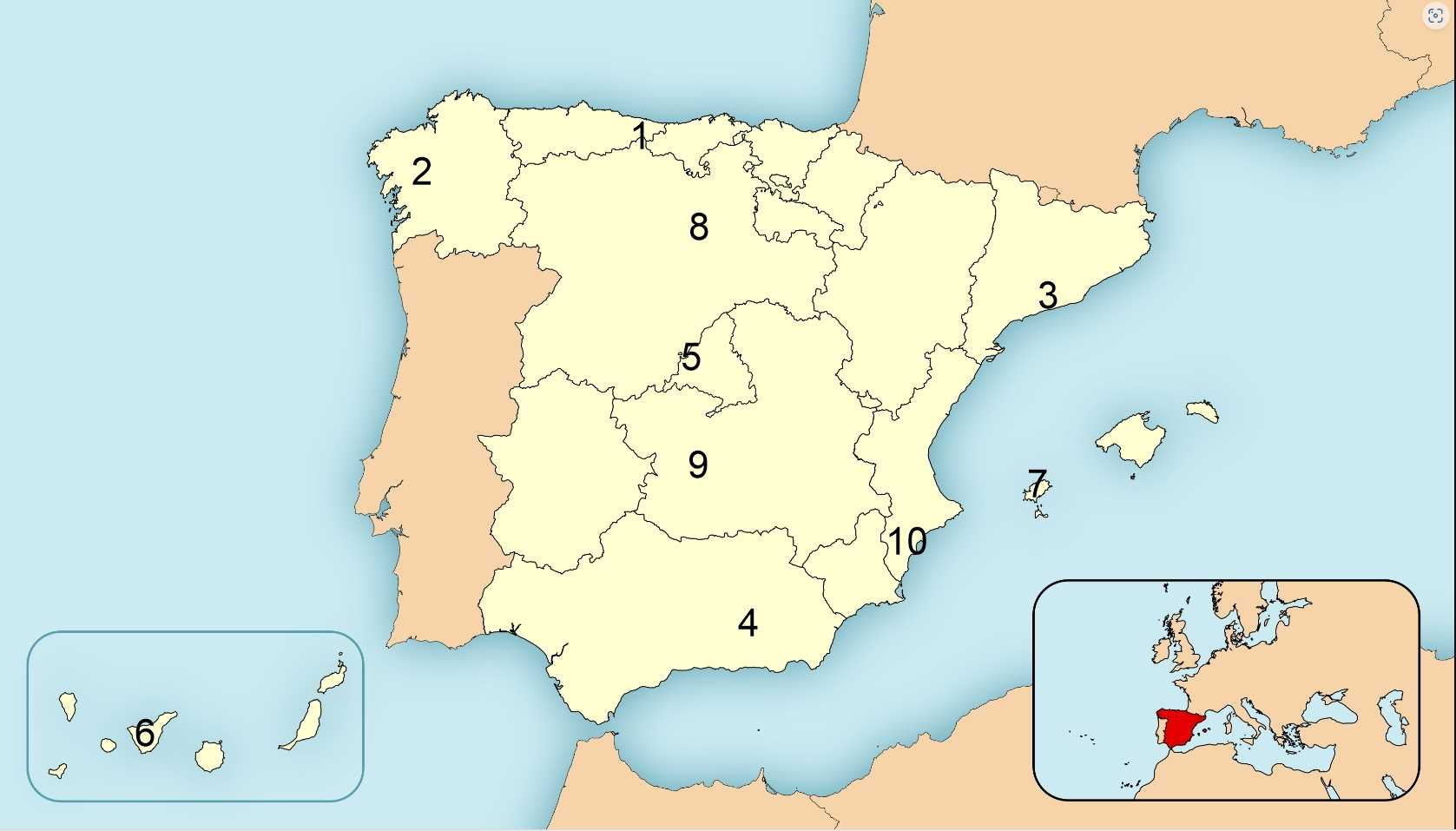
World Heritage Sites in Spain Trivia Quiz
Spain has over thirty World Heritage Sites inscribed on the UNESCO Word Heritage Site list. Can you pinpoint ten of these on the map?
A label quiz
by JanIQ.
Estimated time: 3 mins.


| 1. |
| 2. |
| 3. |
| 4. |
| 5. |
| 6. |
| 7. |
| 8. |
| 9. |
| 10. |